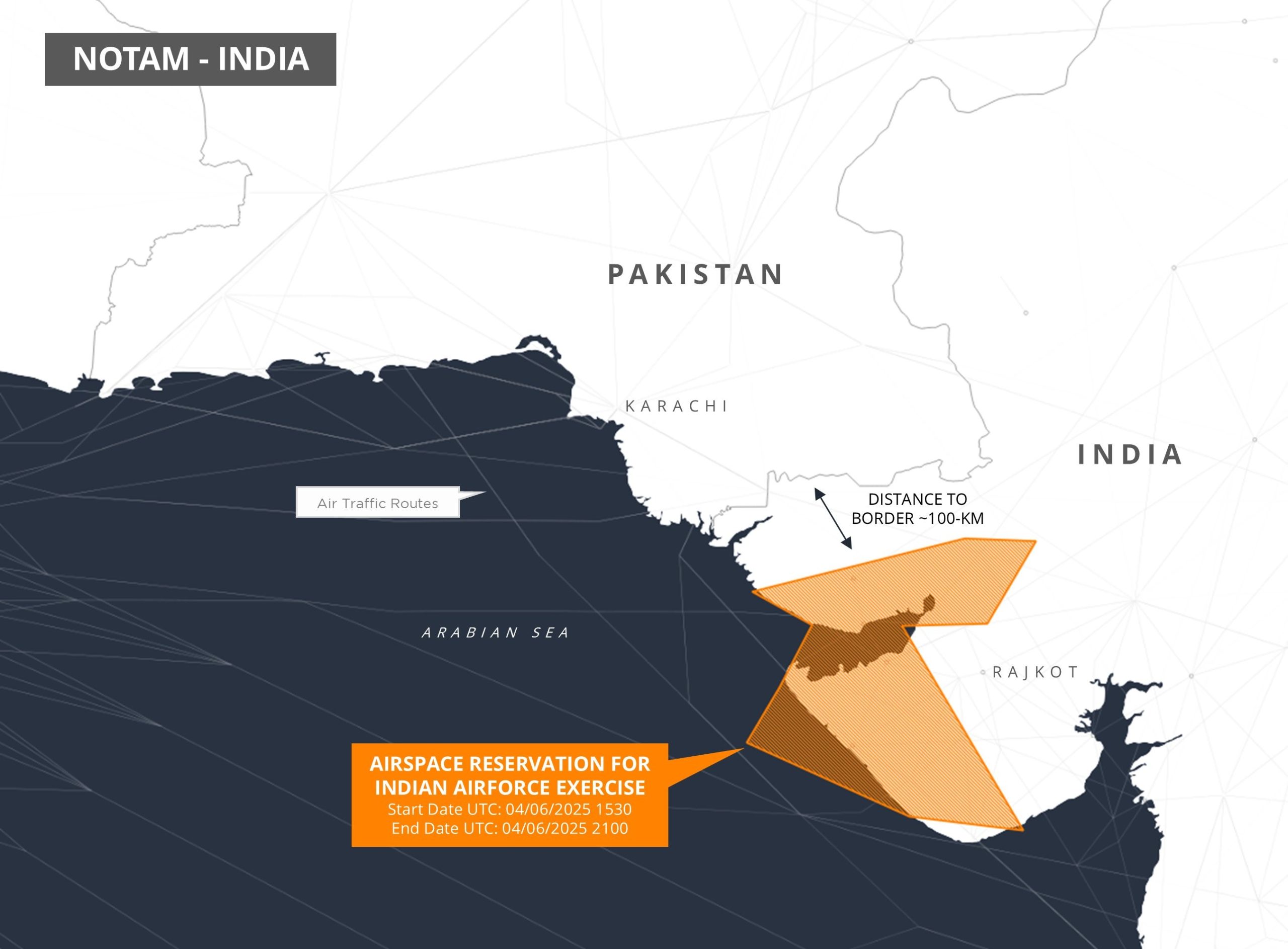The Indian Air Force (IAF) has reserved a key section of airspace near the Pakistan border for a one-day military exercise scheduled on June 4. According to a Notice to Airmen (NOTAM) issued earlier this week, the drill will take place in the southern sector, encompassing airspace close to the Arabian Sea and the Rann of Kutch, less than 100 kilometers from the international boundary.
The timing and location of the exercise reflect India’s sustained state of military preparedness following a series of escalatory exchanges with Pakistan earlier this year. The situation has remained tense since the April 22 terror attack in Pahalgam, Jammu and Kashmir, which killed 26 civilians. The Indian government attributed the incident to militants backed by Pakistan and launched a large-scale retaliatory campaign, Operation Sindoor, on May 6.
Operation Sindoor targeted nine sites across Pakistan and Pakistan-administered Jammu and Kashmir. The operation marked a strategic departure from previous surgical strikes, expanding its scope to include not only terror camps but also Pakistan Army infrastructure. The campaign, described in a recent Stimson Center report as a “significant escalation,” involved precision-guided munitions, long-range cruise missiles, and deep-penetration aerial tactics.
The upcoming exercise follows a similar two-day air drill conducted on May 7 and 8 in Rajasthan, which occurred alongside a nationwide civil defense preparedness campaign. That exercise came directly after the initial strikes of Operation Sindoor and involved extensive mobilization of fighter jets, drones, and surveillance systems. Analysts have dubbed the military flare-up the “87-Hour War,” referencing the rapid sequence of air and artillery exchanges along the Line of Control (LoC).
During the conflict, India is believed to have used its BrahMos cruise missiles and advanced aerial platforms like the Rafale and Su-30 MKI jets. Pakistan reportedly responded with Fatah-II guided rockets and Yiha-III drones, as noted in a prior Janes report. While both sides reported damage to each other’s assets, independent verification remains limited amid ongoing diplomatic restrictions and restricted access to conflict zones.
The strategic airspace now under reservation for the June 4 exercise lies within reach of key Pakistani military installations, including the PAF Base Masroor near Karachi. Security analysts suggest that the IAF’s latest drill serves multiple purposes: refining tactical readiness, reinforcing deterrence posturing, and preparing for any possible Pakistani countermeasures to India’s May offensives.
The decision to conduct the exercise also comes amid reports of continued skirmishes along the LoC and heightened border surveillance. A recent Council on Foreign Relations report highlighted the persistent volatility in Kashmir and the risks of escalation inherent in the unresolved dispute. The situation remains fragile, with both nations having scaled down diplomatic ties in recent weeks.
India has not confirmed losses of its own assets during Operation Sindoor, although speculation continues, especially following a May 11 article in The Hindu that hinted at possible aircraft losses. Meanwhile, Pakistan launched its own military response named “Marka-e-Haq” (Battle for Justice), further intensifying the information and psychological warfare between the two countries.
Commercial aviation will be rerouted during the air exercise, with civil aviation authorities issuing alternative flight paths to avoid the restricted zone. The international community is closely monitoring developments in the region, wary of renewed conflict between the two nuclear-armed neighbors as both militaries remain on high alert.













